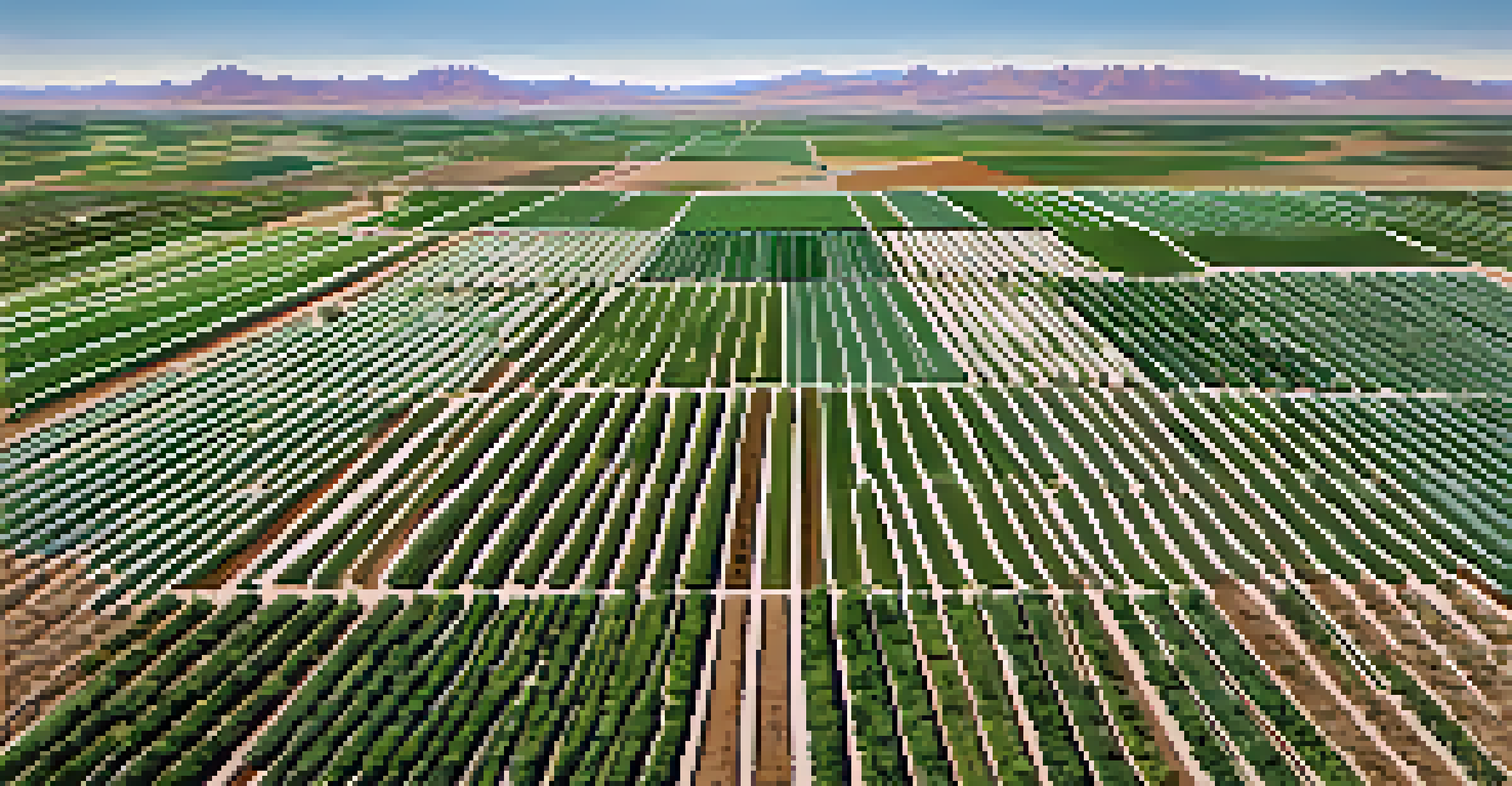Sustainable Water Management Practices in Arizona's Desert

Understanding Arizona's Water Challenges in a Desert Climate
Arizona is known for its stunning desert landscapes, but this beauty comes with significant water challenges. The state is one of the driest in the U.S., receiving less than 12 inches of rain annually in many areas. With a growing population and agricultural demands, the pressure on water resources is immense.
Water, water, everywhere, nor any drop to drink.
Water scarcity isn't just a statistic; it affects communities, ecosystems, and the economy. As temperatures rise and droughts become more frequent, finding sustainable solutions to manage water is not just a necessity but an urgent priority. Understanding these challenges sets the stage for effective management practices.
In a state where every drop counts, Arizonans are increasingly aware of the need for responsible water use. The combination of limited resources and a booming populace calls for innovative solutions that respect both the environment and the needs of residents.
Rainwater Harvesting: Capturing Nature's Gift
One effective practice gaining traction in Arizona is rainwater harvesting. This technique involves collecting and storing rainwater from rooftops or other surfaces for later use, such as irrigation or household needs. It’s a simple yet powerful way to maximize the water available during the rainy season.

By installing rain barrels or cisterns, homeowners can reduce their reliance on municipal water supplies, especially during dry spells. This practice not only conserves water but also reduces runoff, which can lead to erosion and pollution in local waterways. Imagine turning what would otherwise be wasted water into a valuable resource!
Rainwater Harvesting Boosts Conservation
Collecting rainwater from rooftops helps reduce reliance on municipal supplies and promotes sustainable water use.
Communities across Arizona are encouraging rainwater harvesting through workshops and incentives. These initiatives help residents understand the benefits, making sustainable water practices accessible to everyone, and fostering a culture of conservation.
Xeriscaping: Landscaping with Water Efficiency in Mind
Xeriscaping is another sustainable practice that's particularly relevant in Arizona’s arid climate. This landscaping technique focuses on using drought-resistant plants and minimizing water usage in gardens and yards. By selecting native plants that thrive in dry conditions, homeowners can create beautiful landscapes that require significantly less water.
We do not inherit the earth from our ancestors; we borrow it from our children.
Imagine a garden filled with vibrant desert flowers and shrubs that flourish with minimal watering needs. Xeriscaping not only conserves water but also reduces maintenance costs and enhances local biodiversity. Plus, it’s an aesthetically pleasing way to embrace the natural beauty of the desert.
Many Arizona residents are opting for xeriscaping as a way to contribute to water conservation efforts. Local governments often provide resources and incentives to encourage this practice, recognizing its potential to make a significant impact on water usage across the state.
Efficient Irrigation Systems: Smart Watering Solutions
In agriculture, efficient irrigation systems are crucial for sustainable water management. Traditional methods often lead to significant water loss, but modern technologies like drip irrigation and smart controllers can optimize water use. These systems deliver water directly to the plant roots, minimizing evaporation and runoff.
Farmers in Arizona are increasingly adopting these advanced irrigation techniques, allowing them to produce crops while using less water. This method not only conserves resources but also increases crop yield and quality. Picture a field of healthy plants thriving with the right amount of water, thanks to smart technology.
Xeriscaping Enhances Water Efficiency
Using drought-resistant plants in landscaping conserves water and creates visually appealing gardens.
As the agricultural sector evolves, so does the technology used in farming. The integration of sensors and weather data helps farmers make informed decisions about when and how much to irrigate, ensuring that every drop is utilized effectively.
Wastewater Reuse: Transforming a Challenge into a Resource
In Arizona, wastewater reuse is becoming a vital component of sustainable water management. This practice involves treating and repurposing wastewater for non-drinking purposes, such as irrigation or industrial processes. It’s a smart solution that helps stretch limited water supplies further.
By investing in advanced treatment facilities, communities can effectively recycle water, reducing the demand on freshwater sources. Imagine parks and golf courses flourishing with reused water, ensuring that landscapes remain green even in the heat of summer.
Cities like Tucson have pioneered wastewater reuse programs, showcasing how this practice can provide a sustainable water source. As awareness grows, more communities are looking to implement similar systems, contributing to a more resilient water future.
Public Awareness and Education: A Key Component
Public awareness and education play a crucial role in sustainable water management in Arizona. Through workshops, community events, and educational campaigns, residents are learning about the importance of conserving water and adopting sustainable practices. This knowledge empowers individuals to make informed decisions about their water usage.
When communities come together to share information and resources, the impact can be profound. Schools, local governments, and non-profit organizations often collaborate to promote water conservation, ensuring that the message reaches all segments of the population. Think of it as a ripple effect, where one small action can inspire many others.
Innovative Tech Transforms Water Management
Advanced technologies like smart irrigation systems optimize water usage, ensuring resources are used efficiently.
By fostering a culture of sustainability, Arizona can tackle its water challenges more effectively. As more residents engage in water-saving practices, the collective effort can lead to significant improvements in water management across the state.
Innovative Technologies: The Future of Water Management
The future of sustainable water management in Arizona is bright, thanks to innovative technologies. From smart meters that track water usage in real-time to advanced filtration systems for wastewater, technology is paving the way for more efficient practices. These tools help identify leaks, monitor consumption, and optimize resource allocation.
For instance, smart irrigation systems use weather data and soil moisture levels to determine the precise amount of water needed for plants. This not only conserves water but also saves money for homeowners and farmers alike. Imagine a world where technology helps us use water more wisely and sustainably.

As technology continues to evolve, so do the possibilities for managing water resources. Embracing these innovations will be key to ensuring that Arizona can meet its water needs sustainably, even as climate challenges persist.